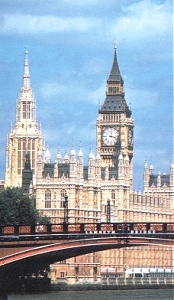|
Temple/London Fall 1999 |
|
|
Temple/London Fall 1999 |
|
A Psychological Profile
of British Media
(A semester project by students in BTMM 346)
 |
|
 |
Every fall and summer, some of the students at Temple University in Philadelphia travel to London, England to study British media, politics, literature, and history.
In the Fall 1999 Temple/London program, the students in the Broadcasting, Telecommunications, and Mass Media course 346 developed a psychological profile of the British mass media.
Data were collected and analyzed over the course of one academic semester. Initial differences between American media and British media were further developed by methodical research. Numerous questions regarding the media were examined, and this web site contains the potential answers. Certainly, a complete study such as this would take years of data gathering, research, and analysis. The goal of the course project is merely to begin the analysis and place it here, on the web, for others to further develop.
The authors are all Temple/London students, most are upperclassmen in the School of Communications and Theater. Others come from diverse backgrounds such as English and Psychology.
The project is divided by medium: television, newspaper, magazine, radio, and film for each question, which is either content or form based. Content deals with what is contained within the medium relating to themes, violence, language, sexuality, and characterization. Form deals with style in terms of camera-angles, production-quality, and clutter. The Table of Contents below consists of the list of questions devised from the class’ initial observations of media differences, and icons are used to indicate which media were examined for each question. The final section of the table of contents contains links to research on specific follow-up questions related to the psychology of media.
To use this site click on the links below. At the bottom of each page there are links to the previous page (indicated by an arrow pointing to the left), to this table of contents, and to the next page (indicated by an arrow pointing to the right).
Initial Observed (Hypothesized) Differences Between U.S. and British Media
Differences in Media Form:
Duration of Parts of
Presentations ![]()
![]()
![]()
![]()
Technical Quality (Production
Values) ![]()
![]()
Differences in Media Content:
Amount of Serious vs. Less
Serious News Coverage ![]()
Physical Attractiveness of Celebrities
Psychological Analysis of Media Questions:
How does the violence portrayed in the media affect the British consumer’s view of life in America?
What formal elements are used in UK men’s magazines to draw in readers?
COMING SOON: If there is more sexuality in the British media, how does that effect the consumer?
![]()